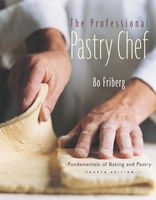Advertisement
Tapioca
By Bo Friberg
Published 1989
Tapioca is virtually pure starch. Extracted from the root of the tropical cassava or manioc plant, an important food source in South America, the word tapioca comes from a term used by Brazilian natives that loosely means “to press or squeeze out dregs or residue.” This is in reference to the way the starch is extracted: The roots are crushed and steeped in water, and the liquid is then pressed out.
Tapioca is available in several forms, including pure starch or flour, quick-cooking granules, flakes, and pearls (also known as beads or pellets). When cooked, this last type of tapioca does not dissolve completely; instead, the small particles become translucent and soft. Pearl tapioca is used to make tapioca pudding, a custardlike dessert, and, in some cases, as a thickener for pie fillings. Pearl tapioca must be soaked before cooking. It is best to follow the instructions on the package if you buy them at your local grocer. If you have access to an Asian market, tapioca can usually be obtained in bulk at very low cost. Tapioca flour, also called tapioca starch, is used in the same way as arrowroot, cornstarch, and potato starch, but it is preferable for products that are to be frozen because it will not break down when thawed. Uncooked tapioca can be kept indefinitely if stored in a cool, dry place.


